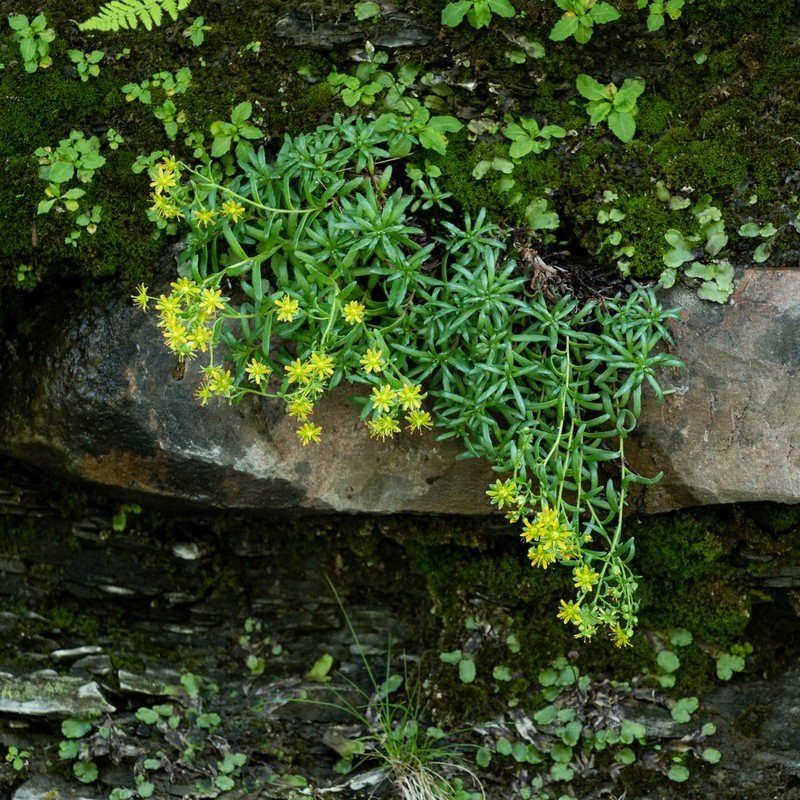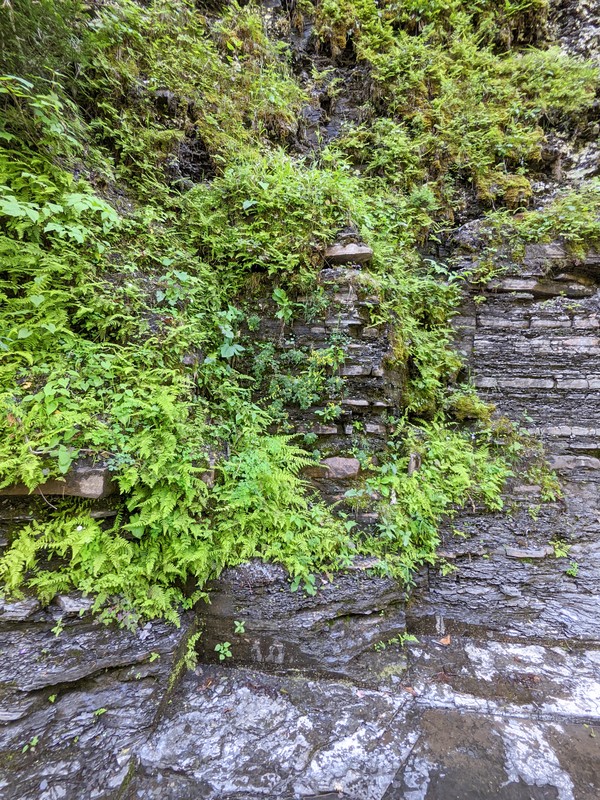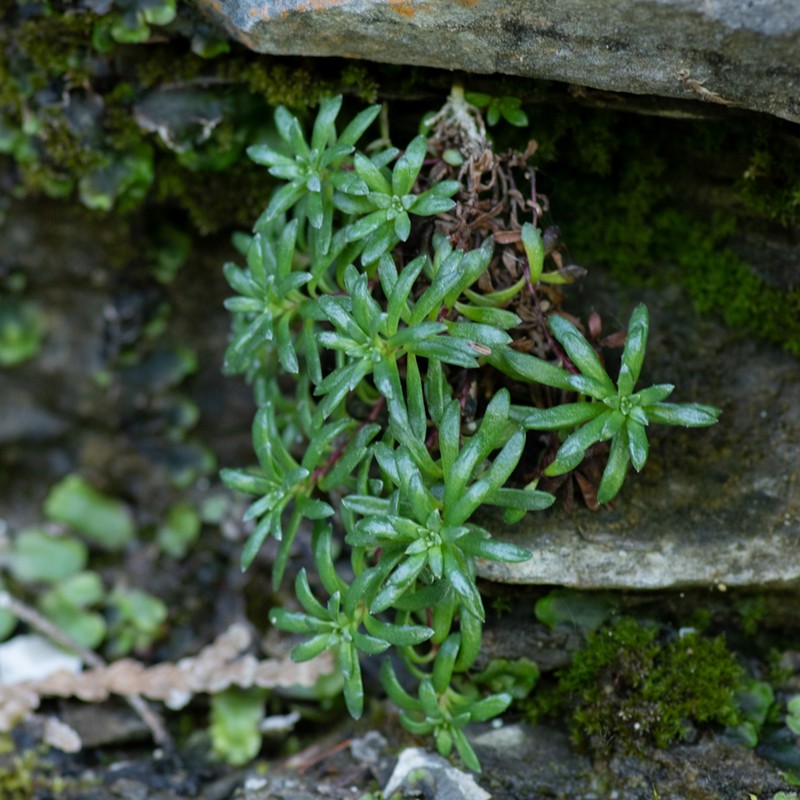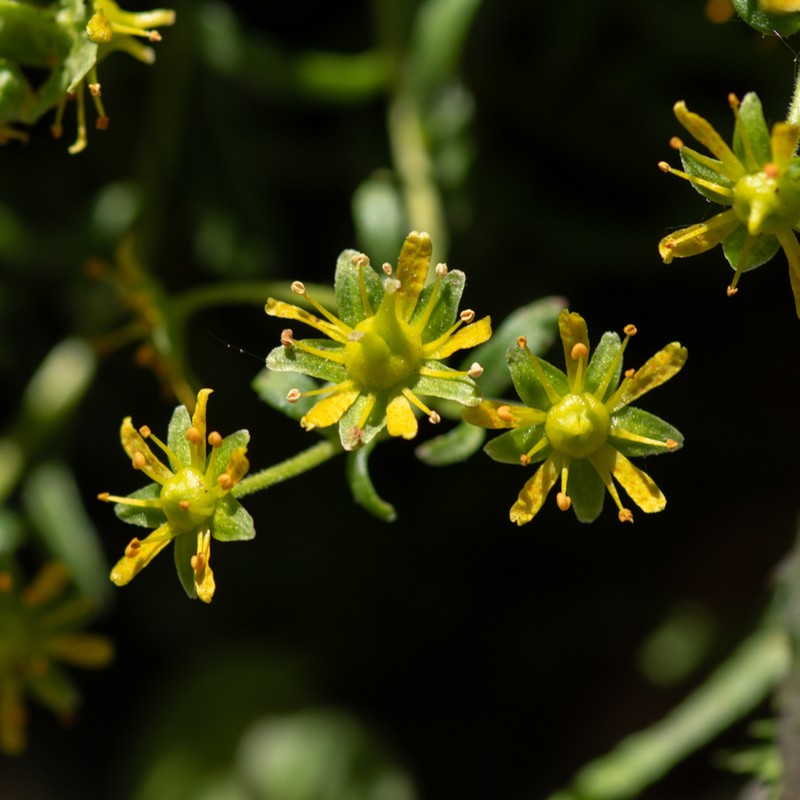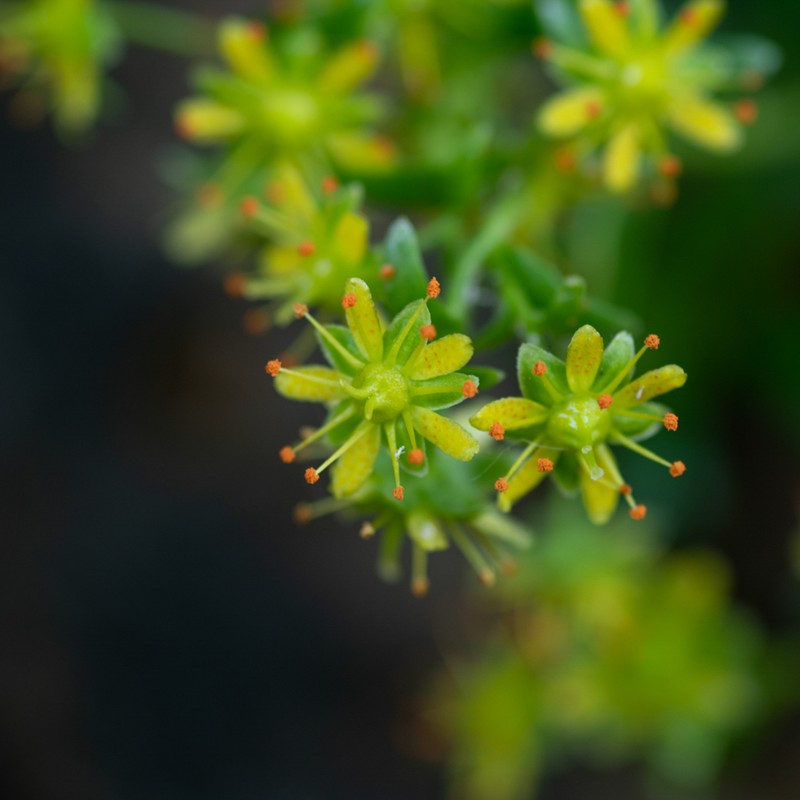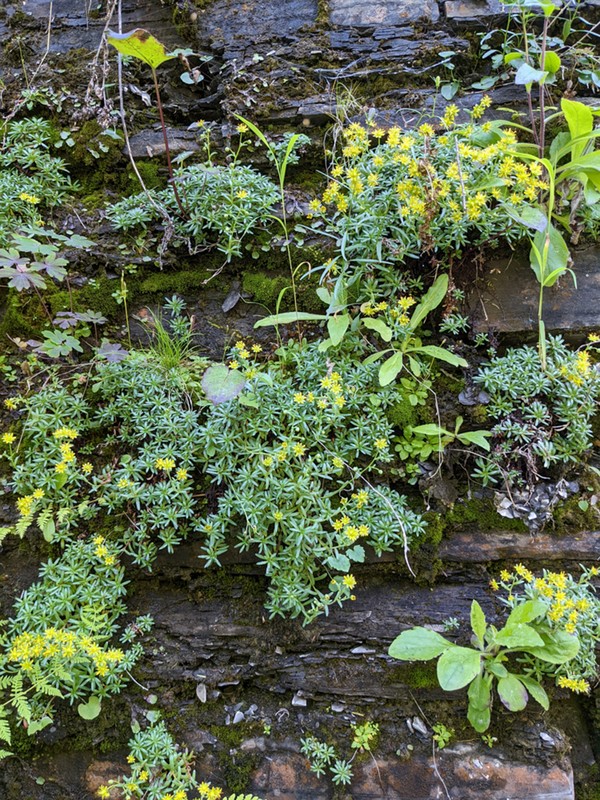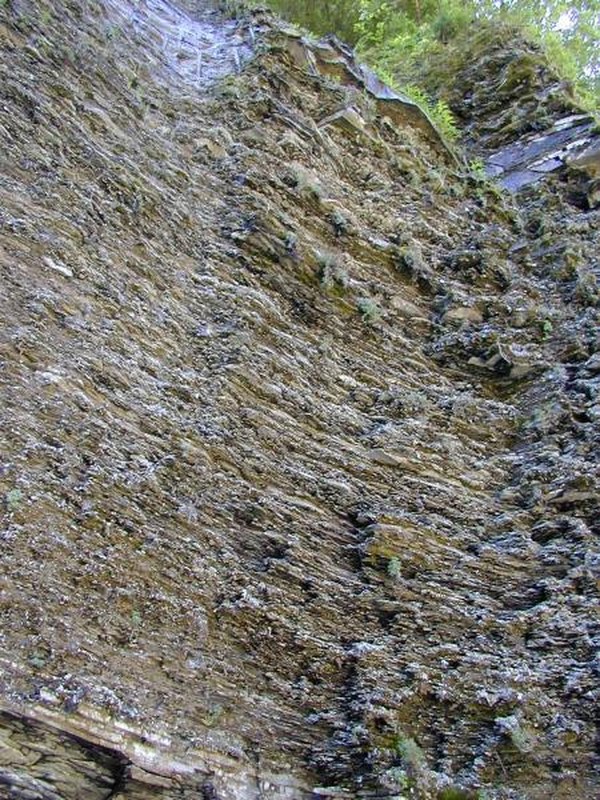Yellow Mountain Saxifrage
Saxifraga aizoides L.
- Class
- Dicotyledoneae (Dicots)
- Family
- Saxifragaceae (Saxifrage Family)
- State Protection
- Threatened
Listed as Threatened by New York State: likely to become Endangered in the foreseeable future. For animals, taking, importation, transportation, or possession is prohibited, except under license or permit. For plants, removal or damage without the consent of the landowner is prohibited.
- Federal Protection
- Not Listed
- State Conservation Status Rank
- S2
Imperiled in New York - Very vulnerable to disappearing from New York due to rarity or other factors; typically 6 to 20 populations or locations in New York, very few individuals, very restricted range, few remaining acres (or miles of stream), and/or steep declines.
- Global Conservation Status Rank
- G5
Secure globally - Common in the world; widespread and abundant (but may be rare in some parts of its range).
Summary
Did you know?
Yellow mountain-saxifrage almost always grows in the company of butterwort and birds-eye primrose. All three of them prefer the cold, wet, shale cliff environment. The genus name Saxifraga is a combination of the words saxum, a stone, and frangere, to break, referring to the granular bulblets of European plants which were supposed to dissolve kidney stones. The species name comes from its resemblance to the succulent plants of the genus Aizoon of the old world.
State Ranking Justification
There are nine known populations of this plant. Most of these populations are on well-protected cliffs, but some cliffs may be subject to natural or artificial sloughing. This plant has a limited range, and an even greater limited habitat. As a plant at the southern limit of its range, it has always likely been rare in New York.
Short-term Trends
The short-term trend of this plant seems stable. This plant is difficult to survey and population counts from year-to-year are usually not recorded. Changes would be noted only if the area where the plants occur was drastically altered, but this has not occurred in the recent past.
Long-term Trends
All but one of the historical sites for this plant have been rediscovered and no sites have been considered extirpated. The habitat for this plant is not common but it is isolated and inaccessible enough that the plants are expected to remain here for many decades.
Conservation and Management
Threats
There are a few threats to these plants since the sites are inaccessible and not open to disturbance. Changes in the amount of groundwater available to the sites could affect them in the future. So far no exotic invasive plants have been seen affecting these sites.
Conservation Strategies and Management Practices
Sites should be monitored for changes in groundwater availability and for any new invasive plants that might be affecting them. There are a handful of invasive species that may cause competition problems.
Research Needs
The impact of sloughing or scaping the cliff faces where this plant is found is not fully understood. There was one cliff face where this plant was found that was scraped for safety reasons. The population was presumed extirpated, only to reappear in a few years. There is interest in understanding this more.
Habitat
Habitat
A plant of seepage areas on open limey-shale cliffs or in the mist of a nearby waterfall. These sites have been lumped under the cliff community designation, but they may be best described as vertical marly fens. The sites are usually surrounded by birch, hemlock, and maple. (New York Natural Heritage Program 2005). On calcareous gravels or cool and damp soils (Fernald 1970).
Associated Ecological Communities
- Calcareous cliff community*
(guide)
A community that occurs on vertical exposures of resistant, calcareous bedrock (such as limestone or dolomite) or consolidated material; these cliffs often include ledges and small areas of talus.
- Cliff community
(guide)
A community that occurs on vertical exposures of resistant, non-calcareous bedrock (such as quartzite, sandstone, or schist) or consolidated material; these cliffs often include ledges and small areas of talus.
- Shale cliff and talus community
(guide)
A community that occurs on nearly vertical exposures of shale bedrock and includes ledges and small areas of talus. Talus areas are composed of small fragments that are unstable and steeply sloping; the unstable nature of the shale results in uneven slopes and many rock crevices.
* probable association but not confirmed.
Associated Species
- Aquilegia canadensis (wild columbine, red columbine)
- Campanula rotundifolia (hare-bell)
- Carex flava (yellow sedge)
- Conocephalum conicum
- Cystopteris bulbifera (bulblet fern)
- Eupatorium rugosum
- Impatiens capensis (spotted jewelweed, spotted touch-me-not)
- Lobelia kalmii (Kalm's lobelia)
- Parnassia glauca (common grass-of-Parnassus)
- Pinguicula vulgaris (butterwort)
- Primula mistassinica (Lake Mistassini primrose, bird's-eye primrose)
- Saxifraga virginiensis
- Solidago ohioensis (Ohio flat-topped-goldenrod)
- Tussilago farfara (colts-foot)
Range
New York State Distribution
This plant is limited to central New York, ranging from the Tug Hill Region west to the Genessee River Gorge. This plant is usually associated with the spray zone of waterfalls and within seepage areas of cliffs made up of fosilliferous shale.
Global Distribution
This plant is circumboreal. Within North America, it may be found south to Vermont, western New York, northern Michigan, and British Columbia.
Identification Comments
General Description
Yellow mountain saxifrage grows in a mat of fleshy green stems with many, short, narrow, fleshy leaves growing from the bottom to the top of the stems. The edges of the leaves have scattered stiff hairs. The half inch wide flowers arise in branched clusters at the tops of the stems and are composed of five, narrow, bright yellow petals alternating with light green, slightly shorter sepals that are overlaid with the bright yellow filaments of the stamens. The yellow-green ovaries are topped by two separate styles. The sepals are persistent around the sides of the beaked capsules.
Identifying Characteristics
This matted plant is found in seepage areas of cliffs and spray zones of waterfalls. It has numerous basal outshoots that are 3-20 cm long. The linear and fleshy leaves are 0.5-2.5 cm long, and have a minute pore below the short mucronate tip. There are typically 1-20 flowers at the tip of most branches. These flowers are yellow and often have orange or red dots.
Best Life Stage for Proper Identification
This plant is easiest to identify in flower, but may also be identified vegetatively. A photograph and description of the habitat should suffice to allow someone to verify the identification.
Similar Species
The combination of habitat and morphological characters make this a unique member of the Saxifragaceae.
Best Time to See
This plant begins to flower in late May, with flowers persisting throughout the summer months. Fruits form shortly after the flowers and usually disperse before the first frosts. The unique nature and habitat of this plant allows for surveys throughout the growing season.
- Vegetative
- Flowering
- Fruiting
The time of year you would expect to find Yellow Mountain Saxifrage vegetative, flowering, and fruiting in New York.
Yellow Mountain Saxifrage Images
Taxonomy
Yellow Mountain Saxifrage
Saxifraga aizoides L.
- Kingdom Plantae
- Phylum Anthophyta
- Class Dicotyledoneae
(Dicots)
- Order Rosales
- Family Saxifragaceae (Saxifrage Family)
- Order Rosales
- Class Dicotyledoneae
(Dicots)
- Phylum Anthophyta
Additional Common Names
- Yellow Alpine Saxifrage
Synonyms
- Leptasea aizoides (L.) Haw.
Additional Resources
Best Identification Reference
Gleason, H.A., and A. Cronquist. 1991. Manual of vascular plants of northeastern United States and adjacent Canada. New York Botanical Garden, Bronx, New York. 910 pp.
Other References
Crow, Garrett E. 1982. New England's Rare, Threatened, and Endangered Plants. Prepared for the United States Department of Interior, Fish and Wildlife Service, Northeast Region. June 1982.
Fernald, M.L. 1950. Gray's manual of botany. 8th edition. D. Van Nostrand, New York. 1632 pp.
Gleason, Henry A. and A. Cronquist. 1991. Manual of Vascular Plants of Northeastern United States and Adjacent Canada. The New York Botanical Garden, Bronx, New York. 910 pp.
Holmgren, Noel. 1998. The Illustrated Companion to Gleason and Cronquist's Manual. Illustrations of the Vascular Plants of Northeastern United States and Adjacent Canada. The New York Botanical Garden, Bronx, New York.
New York Natural Heritage Program. 2010. Biotics database. New York Natural Heritage Program. New York State Department of Environmental Conservation. Albany, NY.
New York Natural Heritage Program. 2024. New York Natural Heritage Program Databases. Albany, NY.
Weldy, T. and D. Werier. 2010. New York flora atlas. [S.M. Landry, K.N. Campbell, and L.D. Mabe (original application development), Florida Center for Community Design and Research http://www.fccdr.usf.edu/. University of South Florida http://www.usf.edu/]. New York Flora Association http://newyork.plantatlas.usf.edu/, Albany, New York
Links
About This Guide
Information for this guide was last updated on: February 1, 2023
Please cite this page as:
New York Natural Heritage Program. 2024.
Online Conservation Guide for
Saxifraga aizoides.
Available from: https://guides.nynhp.org/yellow-mountain-saxifrage/.
Accessed July 27, 2024.
